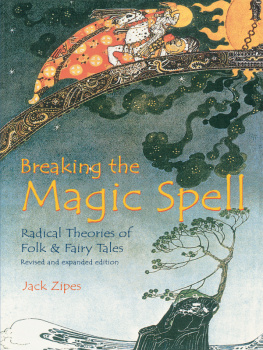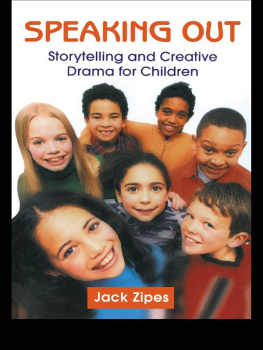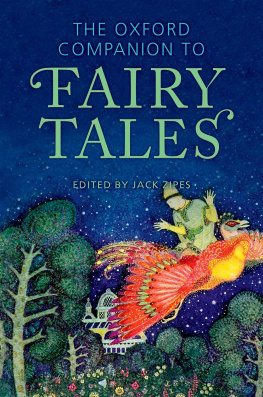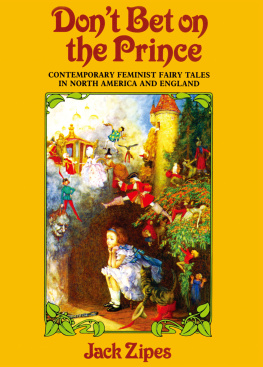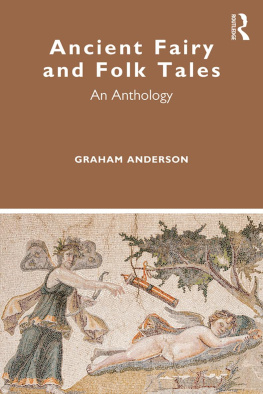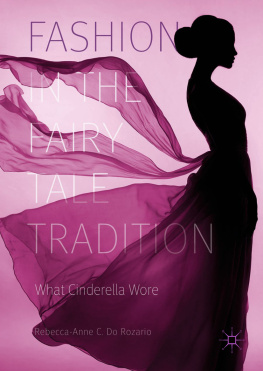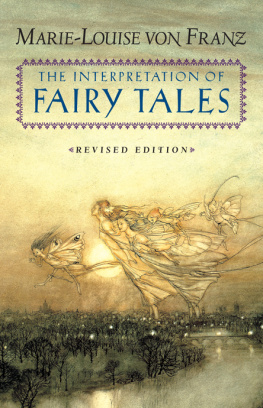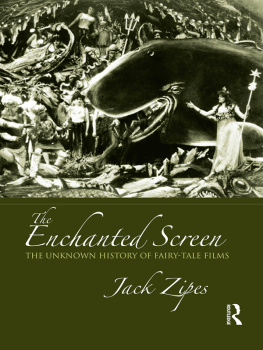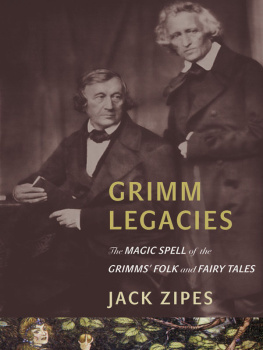
The Irresistible Fairy Tale
The Irresistible Fairy Tale

The Cultural and Social History of a Genre
Jack Zipes

Copyright 2012 by Princeton University Press
Published by Princeton University Press, 41 William Street,
Princeton, New Jersey 08540
In the United Kingdom : Princeton University Press, 6 Oxford Street,
Woodstock, Oxfordshire OX20 1TW
press.princeton.edu
Jacket art : Kiki Smith, Born, 2002. Lithograph in 12 colors on Saunders Watercolor HP from St. Cuthberts Mill. 68 56 in (172.7 142.2 cm). Photo courtesy Universal Limited Art Editions, Inc. Kiki Smith and Universal Limited Art Editions, Inc.
All Rights Reserved
Library of Congress Cataloging-in-Publication Data
Zipes, Jack, 1937
The irresistible fairy tale : the cultural and social history of a genre / Jack Zipes.
p. cm.
Includes bibliographical references and index.
ISBN 978-0-691-15338-4 (hardcover : alk. paper) 1. Fairy talesHistory and criticism.
2. Fairy talesSocial aspects. I. Title.
GR550.Z59 2012
398.209--dc23 2011040188
British Library Cataloging-in-Publication Data is available
This book has been composed in Minion Pro
Printed on acid-free paper.
Printed in the United States of America
10 9 8 7 6 5 4 3 2 1

To Klaus Doderer, friend and mentor

Contents

Illustrations

Preface
During the past fifty years, the scholarly study of oral folk and literary fairy tales throughout the world has flourished and appears to have expanded commensurately with the irresistible rise of fairy tales in almost all cultural and commercial fields. Though many different approaches to folk and fairy tales have stood in conflict with one another, and though universities have eliminated many folklore programs, there has generally been a peaceful, if not tolerant, attitude among the disputing sides in the academic world. Nobody has ever claimed to know everything about the oral wonder tale or literary fairy tale. Most folklorists and literary critics have, in fact, largely agreed that the fairy tale emanated from oral traditions, and that the history of tale types related to the fairy tale is complex and cannot be reduced to simple or positivist explanations. The diversity of analytic approaches to folk and fairy tales has generally enriched the fields of anthropology, comparative literature, cultural studies, childrens literature, psychology, philosophy and others. If there is any single genre that has captured the imagination of people in all walks of life throughout the world, it is the fairy tale, and yet we still have great difficulty in explaining its historical origins, how it evolved and spread, and why we cannot resist its appeal, no matter what form it takes.
In my own case, during the past forty years I have tried to forge a greater link with the social and natural sciences to explain the fairy tales irresistible and inexplicable appeal. I have sought, in particular, to widen my own sociopolitical approach to folk and fairy tales, and have explored new developments in evolutionary psychology, cultural anthropology, biology, memetics, cognitive philosophy, and linguistics. For the most part, I have endeavored to demonstrate that the historical evolution of storytelling reflects struggles of human beings worldwide to adapt to their changing natural and social environments. The cultural evolution of the fairy tale is closely bound historically to all kinds of storytelling and different civilizing processes that have under-girded the formation of nation-states.
I do not believe in the notion of progress, or that we come to a greater understanding of the arts through improved technological advances and greater rationalized civilizing processes. But I certainly believe in evolution, adaptation, innovation, and transformation that can be traced in diverse cultural patterns and hark back to ancient societies long before the rise of nation-states. I am fascinated by the mediation of writing, print, the visual arts (painting and illustration), electronics, photography, film, and the Internet that has enabled the fairy tale to change as well as expand in unusual, innovative ways. In this regard, I have explored how Richard Dawkinss notion of memes might be useful for explaining the replication, evolution, and dissemination of folk and fairy tales, and I have also been influenced by other theorists of cultural evolution.
In 2006, I published Why Fairy Tales Stick: The Evolution and Relevance of a Genre, in which I tried to ground the fairy tales development in oral traditions based on the biological and cultural dispositions of human beings. Since its publication numerous significant studies have appeared in a short time, dealing with cultural evolution, memes, socionarratology, the origins of storytelling, and the history of fairy tales. These studies have a bearing on how we understand the nature and history of the fairy tale. They have by and large reinforced my belief that we can never explain the inexplicable fairy tales, but we can learn to fathom how and why they evolved in oral and literary traditions, and why we are impelled and compelled to use them to make meaning out of our lives.
In some ways we live and breathe fairy tales, or, as Arthur Frank insists in his highly stimulating book Letting Stories Breathe: A Socio-Narratology, stories have lives of their own, which we then embody. Though there was no such thing as a fairy tale as we understand it today when humans developed the capacity to speak, communicate, and tell tales thousands of years ago, there were certainly metaphoric linguistic seeds in their communications that contributed to the gradual formation of oral wonder tales. This book explores the history of the mediations that have enabled fairy-tale seeds to blossom, flourish, and become one of the most irresistible as well as inexplicable cultural genres in the world. My book also responds to some deplorable scholarly endeavors that have sought to dismiss the fairy tales oral roots and reduce it to a genre that privileges print over orality. I have reviewed these works in the two appendixes to make my position firm and clear, for it is important, I believe, not to be silent when misleading ideas are circulated as fact.
The first chapter, The Cultural Evolution of Storytelling and Tales: Human Communication and Memetics, expands on my most recent books, Why Fairy Tales Stick and Relentless Progress, and includes new research by Michael Tomasello, Michael Trout, Kate Distin, Frank, and other scholars interested in interdisciplinary approaches to cultural evolution. It clarifies why and how tales were created and told, and formed the basis of culture. In my opinion oral tales were imitated and replicated as memes in antiquity to form the fiber of culture and tradition. Taxonomies in the nineteenth century were established in response to recognizable features of tales as well as to organize and order types of stories. Modern genres originated during the Enlightenment and are basically social institutions that have defined cultural artifacts and patterns, divided them rationally into disciplines, and established rules and regulations for their study. In many ways, the fairy tale defies such definition and categorization.
Next page


